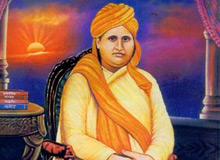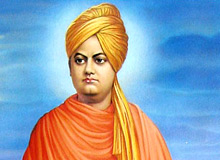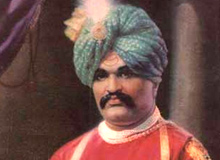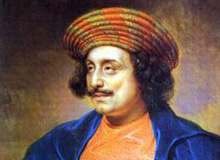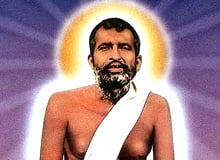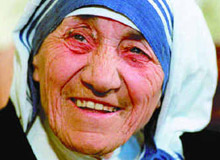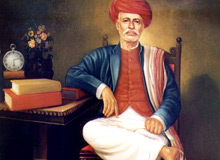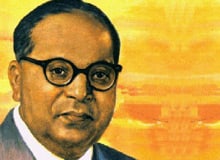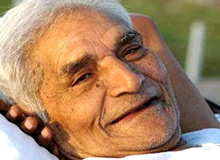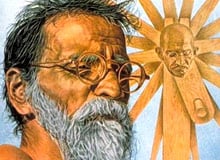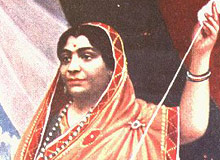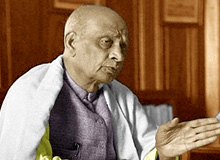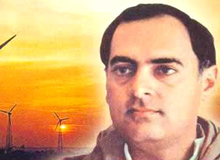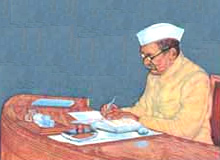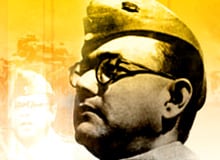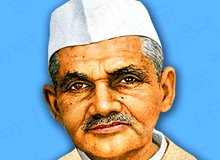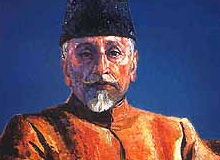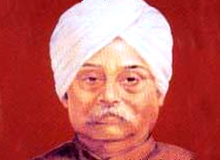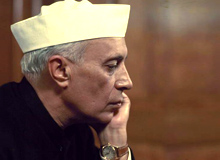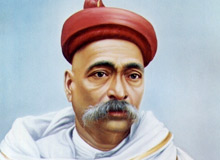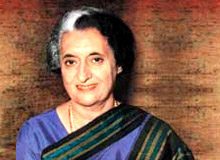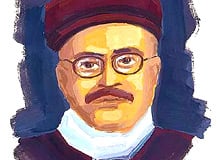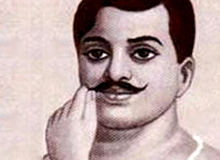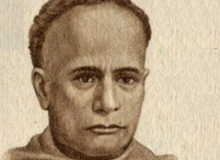
Born: 26 September, 1820
Died: 29 July, 1890
Contributions
Ishwar Chandra Vidyasagar is considered as one of the pillars of Bengal renaissance. In other words, he managed to continue the reforms movement that was started by Raja Rammohan Roy. Vidyasagar was a well-known writer, intellectual and above all a staunch follower of humanity. He brought a revolution in the education system of Bengal. In his book, "Barno-Porichoy" (Introduction to the letter), Vidyasagar refined the Bengali language and made it accessible to the common strata of the society. The title 'Vidyasagar' (ocean of knowledge) was given to him due to his vast knowledge in almost all the subjects. Poet Michael Madhusudan Dutta while writing about Ishwar Chandra said: "The genius and wisdom of an ancient sage, the energy of an Englishman and the heart of a Bengali mother".
Life & Education
Ishwar Chandra Bandopadhyaya, was born in Birsingha village of Midnapore district, West Bengal. His father Thakurdas Bandyopadhyay and mother Bhagavati Devi were very religious persons. Their economic condition was not that stable and subsequently the childhood days of Vidyasagar were spent in abject poverty. After the completion of elementary education at the village school, his father took him to Calcutta (Kolkata). It is believed that Ishwar Chandra Vidyasagar learned English numbers by following the mile-stones labels on his way to Calcutta at the age of eight years.
Ishwar Chandra was a brilliant student. His quest for knowledge was so intense that he used to study on street light as it was not possible for him to afford a gas lamp at home. He cleared all the examinations with excellence and in quick succession. He was rewarded with a number of scholarships for his academic performance. To support himself and the family Ishwar Chandra also took a part-time job of teaching at Jorashanko.
In the year 1839, Ishwar Chandra Vidyasagar successfully cleared his Law examination. In 1841, at the age of twenty one years, Ishwar Chandra joined the Fort William College as a head of the Sanskrit department.
After five years, in 1946, Vidyasagar left Fort William College and join the Sanskrit College as 'Assistant Secretary'. In the first year of service, Ishwar Chandra recommended a number of changes to the existing education system. This report resulted into a serious altercation between Ishwar Chandra and College Secretary Rasomoy Dutta. Following this, Vidyasagar resigned from Sanskrit College and rejoined Fort William College but as a head clerk.
A kind-hearted Ishwar
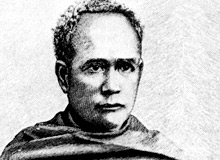
Ishwar Chandra Vidyasagar would start crying in distress whenever he saw poor and weak people lying on the footpath and street. He used to spend a part of his scholarships and salary for the welfare of those poor people. He would also buy medicine for the sick.
Reforms
Ishwar Chandra Vidyasagar initiated the concept of widow remarriage and raised concern for the abolition of child-marriage and polygamy. He also opened the doors of the colleges and other educational institutions to lower caste students, which was earlier reserved only for the Brahmins. For his immense generosity and kind-heartedness, people started addressing him as "Dayar Sagar" (ocean of kindness).
Nawab's shoe donation
One day, Ishwar Chandra Vidyasagar and his few friends decided to collect donations to form Calcutta University. He traveled across Bengal and neighboring states asking people to donate for the foundation. While doing so, one day he reached outside the palace of an influential King. After hearing his plea the King, pulled one of his shoes and dropped into Vidyasagar's bag as donation. Vidyasagar thanked Nawab and left.
The very next day Vidyasagar organized an auction of the Nawab's shoe and earned Rs. 1000. The Nawab after hearing that his shoe has fetched so much amount of money, he himself gave a similar amount of money as donation.
Death
Ishwar Chandra Vidyasagar, the great scholar, academician and reformer passed away on 29 July, 1891 at the age of 70 years. After his death Rabindranath Tagore said, "One wonders how God, in the process of producing forty million Bengalis, produced a man!"
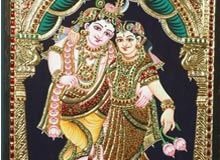 Tanjore Painting is one of the most popular forms of classical South Indian painting. It is the native art form of Thanjavur (also known as Tanjore) city of Tamil Nadu. The dense composition, surface richness and vibrant colors of Indian Thanjavur Paintings distinguish them from the other types of paintings. Then, there are embellishments of semi-precious stones, pearls and glass pieces that further add to their appeal. The relief work gives them a three dimensional effect. Tanjore Painting of India originated during the 16th century, under the reign of the Cholas.
Tanjore Painting is one of the most popular forms of classical South Indian painting. It is the native art form of Thanjavur (also known as Tanjore) city of Tamil Nadu. The dense composition, surface richness and vibrant colors of Indian Thanjavur Paintings distinguish them from the other types of paintings. Then, there are embellishments of semi-precious stones, pearls and glass pieces that further add to their appeal. The relief work gives them a three dimensional effect. Tanjore Painting of India originated during the 16th century, under the reign of the Cholas.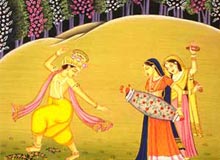 Rajput painting originated in the royal states of Rajasthan, somewhere around the late 16th and early 17th century. The Mughals ruled almost all the princely states of Rajasthan at that time and because of this; most of the schools of Rajput Painting in India reflect strong Mughal influence. Each of the Rajput kingdoms evolved a distinctive style. However, similarities and common features can still be found in the paintings of different territories.
Rajput painting originated in the royal states of Rajasthan, somewhere around the late 16th and early 17th century. The Mughals ruled almost all the princely states of Rajasthan at that time and because of this; most of the schools of Rajput Painting in India reflect strong Mughal influence. Each of the Rajput kingdoms evolved a distinctive style. However, similarities and common features can still be found in the paintings of different territories. 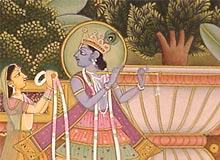 Pahari painting is the name given to Rajput paintings, made in Himachal Pradesh and Jammu & Kashmir states of India. These paintings developed and flourished during the period of 17th to 19th century. Indian Pahari paintings
Pahari painting is the name given to Rajput paintings, made in Himachal Pradesh and Jammu & Kashmir states of India. These paintings developed and flourished during the period of 17th to 19th century. Indian Pahari paintings 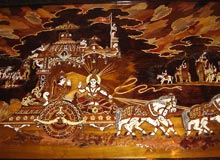 Mysore Painting is a form of classical South Indian painting, which evolved in the Mysore city of Karnataka. During that time, Mysore was under the reign of the Wodeyars and it was under their patronage that this school of painting reached its zenith. Quite similar to the Tanjore Paintings, Mysore Paintings of India make use of thinner gold leaves and require much more hard work. The most popular themes of these paintings include Hindu Gods and Goddesses and scenes from Hindu mythology. The grace, beauty and intricacy of Indian Mysore Paintings leave the onlookers mesmerized.
Mysore Painting is a form of classical South Indian painting, which evolved in the Mysore city of Karnataka. During that time, Mysore was under the reign of the Wodeyars and it was under their patronage that this school of painting reached its zenith. Quite similar to the Tanjore Paintings, Mysore Paintings of India make use of thinner gold leaves and require much more hard work. The most popular themes of these paintings include Hindu Gods and Goddesses and scenes from Hindu mythology. The grace, beauty and intricacy of Indian Mysore Paintings leave the onlookers mesmerized. 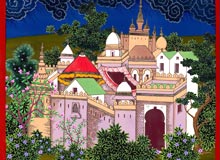 Mughal painting reflects an exclusive combination of Indian, Persian and Islamic styles. As the name suggests, these paintings evolved as well as developed during the rule of Mughal Emperors in India, between 16th to 19th century. The Mughal paintings of India revolved around themes, like battles, court scenes, receptions, legendary stories, hunting scenes, wildlife, portraits, etc. The Victoria and Albert Museums of London house a large and impressive collection of Mughal paintings.
Mughal painting reflects an exclusive combination of Indian, Persian and Islamic styles. As the name suggests, these paintings evolved as well as developed during the rule of Mughal Emperors in India, between 16th to 19th century. The Mughal paintings of India revolved around themes, like battles, court scenes, receptions, legendary stories, hunting scenes, wildlife, portraits, etc. The Victoria and Albert Museums of London house a large and impressive collection of Mughal paintings.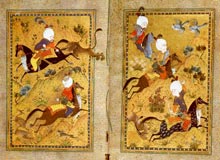 Miniatures paintings are beautiful handmade paintings, which are quite colorful but small in size. The highlight of these paintings is the intricate and delicate brushwork, which lends them a unique identity. The colors are handmade, from minerals, vegetables, precious stones, indigo, conch shells, pure gold and silver. The most common theme of the Miniature painting of India comprises of the Ragas i.e., the musical codes of Indian classical music. There were a
Miniatures paintings are beautiful handmade paintings, which are quite colorful but small in size. The highlight of these paintings is the intricate and delicate brushwork, which lends them a unique identity. The colors are handmade, from minerals, vegetables, precious stones, indigo, conch shells, pure gold and silver. The most common theme of the Miniature painting of India comprises of the Ragas i.e., the musical codes of Indian classical music. There were a 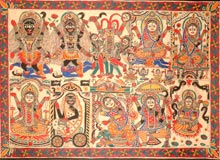 Madhubani painting originated in a small village, known as Maithili, of the
Madhubani painting originated in a small village, known as Maithili, of the 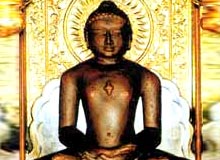 Lord Mahavira is often credited with the advent of Jainism in India. However, Jainism existed even before Lord Mahavira was born. He is supposed to be the twenty-fourth (last) Tirthankara according to the Jain philosophy. A Tirthankara is an enlightened soul who is born as a human being and attains perfection through intense meditation. For a Jain, Lord Mahavira is no less than God and his philosophy is like the Bible. Born as Vardhamana Mahavir, he later came to be known as Bhagvan Mahaveer. Read the short biography of Lord Mahavira to know the intriguing life history of Bhagvan Mahaveer.
Lord Mahavira is often credited with the advent of Jainism in India. However, Jainism existed even before Lord Mahavira was born. He is supposed to be the twenty-fourth (last) Tirthankara according to the Jain philosophy. A Tirthankara is an enlightened soul who is born as a human being and attains perfection through intense meditation. For a Jain, Lord Mahavira is no less than God and his philosophy is like the Bible. Born as Vardhamana Mahavir, he later came to be known as Bhagvan Mahaveer. Read the short biography of Lord Mahavira to know the intriguing life history of Bhagvan Mahaveer. 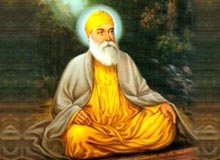 Sri Guru Nanak Dev Ji is credited with starting the Sikh religion. He was the first Guru of the Sikhs and is worshipped next to God. His sole aim in life was to unify the Hindus and Muslims and form a universal religion of brotherhood and compassion. He believed that true salvation could be achieved only by devotion of thought and excellence of conduct. In the contemporary world, Sikhism is spread far and wide in not just India but also America, Africa, Europe, etc. The life history of Guru Nanak Dev is very motivational and inspiring. We give you a short biography of Guru Nanak Dev.
Sri Guru Nanak Dev Ji is credited with starting the Sikh religion. He was the first Guru of the Sikhs and is worshipped next to God. His sole aim in life was to unify the Hindus and Muslims and form a universal religion of brotherhood and compassion. He believed that true salvation could be achieved only by devotion of thought and excellence of conduct. In the contemporary world, Sikhism is spread far and wide in not just India but also America, Africa, Europe, etc. The life history of Guru Nanak Dev is very motivational and inspiring. We give you a short biography of Guru Nanak Dev. 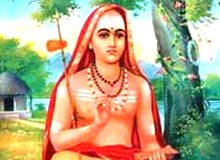 One of
One of 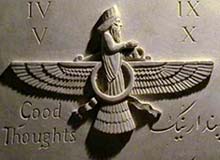 Though the total
Though the total 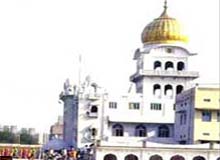 Sikhs form about 2 per cent of Indian population. In comparison to other religions, Sikhism is a younger religion. The word 'Sikh' means a disciple and thus Sikhism is essentially the path of discipleship. The true Sikh remains unattached to worldly things. The Sikh must do his duty to his family and to the community. Sikhism was established by Guru Nanak. It preaches the existence of only one God and teaches universally acceptable ideals of honesty, compassion, humbleness, piousness, social commitment and tolerance for other religions.
Sikhs form about 2 per cent of Indian population. In comparison to other religions, Sikhism is a younger religion. The word 'Sikh' means a disciple and thus Sikhism is essentially the path of discipleship. The true Sikh remains unattached to worldly things. The Sikh must do his duty to his family and to the community. Sikhism was established by Guru Nanak. It preaches the existence of only one God and teaches universally acceptable ideals of honesty, compassion, humbleness, piousness, social commitment and tolerance for other religions. 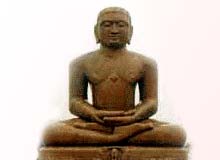 Jains form less than one percent of the Indian population. For centuries, Jains are famous as community of traders and merchants. The states of
Jains form less than one percent of the Indian population. For centuries, Jains are famous as community of traders and merchants. The states of  One of the prominent
One of the prominent 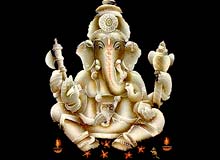 Hinduism is the oldest religion in the world. Hinduism is world's third largest religion after Christianity and Islam. Hinduism is the dominant religion in India, where Hindus form about 84 per cent of the total
Hinduism is the oldest religion in the world. Hinduism is world's third largest religion after Christianity and Islam. Hinduism is the dominant religion in India, where Hindus form about 84 per cent of the total 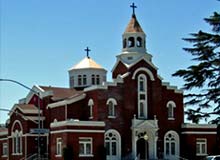 Christianity is one of the prominent religions in India. At present there are about 25 million Christians in India. It is interesting to note that the Christian population in India is more than the entire population of Australia and New Zealand or total population of a number of countries in Europe. Kerala, Goa and Mizoram states have high concentration of Christian population in India. Kerala has the largest number of Christians among the states. Christians including Catholics, Orthodox and Protestants form the third largest group in India.
Christianity is one of the prominent religions in India. At present there are about 25 million Christians in India. It is interesting to note that the Christian population in India is more than the entire population of Australia and New Zealand or total population of a number of countries in Europe. Kerala, Goa and Mizoram states have high concentration of Christian population in India. Kerala has the largest number of Christians among the states. Christians including Catholics, Orthodox and Protestants form the third largest group in India.  At present Buddhism is one of the major world religions. The philosophy of Buddhism is based on the teachings of Lord Buddha, Siddhartha Gautama (563 and 483 BC), a royal prince of Kapilvastu, India. After originating in India, Buddhism spread throughout the Central Asia, Sri Lanka, Tibet, Southeast Asia, as well as the East Asian countries of China, Mongolia, Korea, Japan and Vietnam. Buddhism owes its origin to the socio-economic conditions prevailing in India at that point of time.
At present Buddhism is one of the major world religions. The philosophy of Buddhism is based on the teachings of Lord Buddha, Siddhartha Gautama (563 and 483 BC), a royal prince of Kapilvastu, India. After originating in India, Buddhism spread throughout the Central Asia, Sri Lanka, Tibet, Southeast Asia, as well as the East Asian countries of China, Mongolia, Korea, Japan and Vietnam. Buddhism owes its origin to the socio-economic conditions prevailing in India at that point of time. 